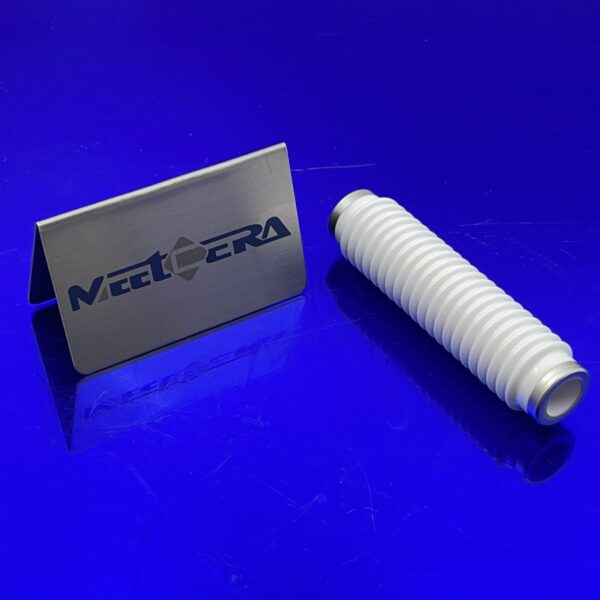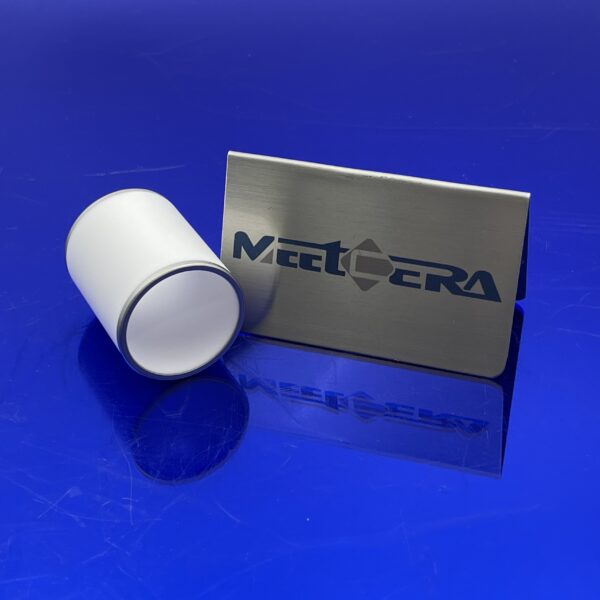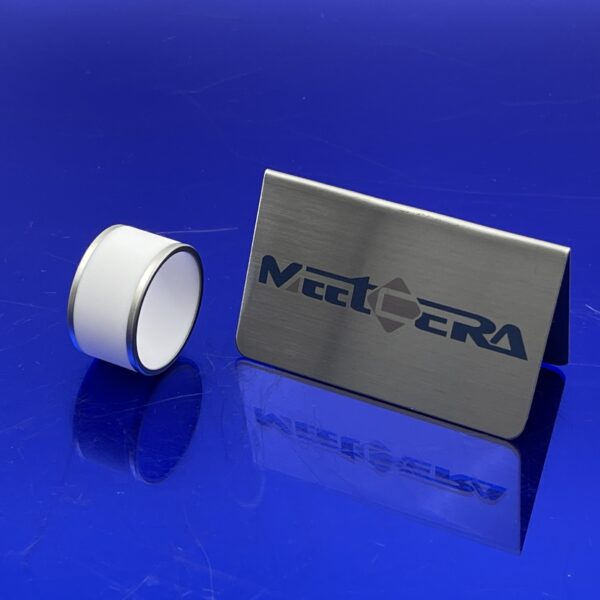Reasons for Metallized Ceramic Components for Emerging Applications?
Emerging applications are those pushing beyond what is currently common. They often involve smaller sizes, higher speeds, more complex functions, and tougher operating environments. Think about the chips powering the latest AI, miniaturized sensors implanted in the body, components for space satellites, or equipment for next-generation wireless communication. These areas demand performance that traditional materials struggle to provide. They need components that are small, strong, resistant to heat and chemicals, electrically precise, and highly reliable.
How do engineers pack more and more functionality into smaller and smaller spaces without performance loss?
This push for miniaturization intensifies the challenge of managing heat, preventing electrical interference, and ensuring physical durability in tiny components. When parts are very close, heat builds up faster, and electrical signals can affect each other. Making these small parts strong enough to survive manufacturing and use is also difficult.
Metallized ceramics allow for complex, high-precision shapes that fit into tight spaces. Their inherent stiffness provides mechanical support for dense assemblies. Furthermore, the metallization layers can be patterned precisely to create high-density electrical interconnects directly on the ceramic surface, reducing the need for separate wiring and enabling more compact designs.
I recall working with a startup needing to build a sensor much smaller than anything before. Using traditional materials meant the assembly was too big. Switching to a metallized ceramic substrate allowed them to integrate multiple functions onto a single, tiny, robust piece.
How can components work reliably when exposed to conditions far beyond typical limits, like high vacuum, intense heat or cold, or radiation?
These extreme conditions severely stress most materials. Plastics can outgas in vacuum, metals can deform at high heat, and standard insulators can degrade under radiation. Failure in these environments is often catastrophic, meaning the entire system fails. This is unacceptable in critical applications like space exploration or certain industrial processes.
Ceramics like alumina maintain their physical and electrical properties over a very wide temperature range, from cryogenic cold to extreme heat. They do not outgas in vacuum, which is essential for space and scientific equipment. Additionally, many ceramics are inherently radiation resistant. The hermetic seals created by brazing metallized ceramics1 to metal parts prevent leaks, maintaining performance in vacuum or controlled atmospheres.
We helped a client develop a component for a high-energy physics experiment. The part had to work in a hard vacuum and handle some radiation. Traditional materials failed quickly. A metallized alumina feedthrough provided the necessary vacuum seal and radiation tolerance.
How do designers ensure electrical signals travel accurately without distortion and that components handle power efficiently at these high speeds?
At high frequencies, material properties like dielectric constant and loss tangent become critical. Traditional PCB materials can cause signal loss or distortion. Managing impedance is also hard. Handling significant power at high frequency adds the problem of heat generation in components and interconnects. Poor material choices limit the speed and efficiency of the device.
Ceramics, especially materials like alumina or aluminum nitride, have stable and favorable dielectric properties at high frequencies. They exhibit low signal loss. The precise metallization patterns applied through processes like thin-film or thick-film printing allow engineers to create controlled impedance transmission lines and high-density power distribution networks directly on the ceramic substrate. This is vital for signal integrity and efficient power delivery in advanced high-frequency circuits.
In the development of 5G and future communication systems, engineers need substrates that do not degrade the signal. My work with companies in this area shows that ceramic's electrical properties are a major advantage over organic materials at these frequencies.
How can these connections be made reliable, strong, and completely sealed, especially when the device might face temperature changes or vibration?
Standard joining methods like soldering or gluing might not provide the needed strength or hermeticity. A non-hermetic seal can allow moisture or contaminants in, causing failure. Mechanical stress from thermal expansion differences between materials can break weaker joints. Failure of a single interconnection can render a complex, expensive device useless.
The metallization layer on ceramic components provides a surface that can be reliably brazed to metals. Brazing creates a metallurgical bond that is extremely strong and inherently hermetic. This allows for the creation of durable, sealed feedthroughs, packages, and complex multi-material assemblies that withstand temperature cycling, vibration, and harsh environments, ensuring long-term reliability for critical connections.
We assisted a client developing a medical implant. The connection between the electronic package and the metallic housing had to be absolutely hermetic to prevent body fluids from reaching the electronics. Brazing a metallized ceramic insulator provided the necessary, long-lasting seal.
How do engineers select materials that are safe and stable in such specific environments?
Many materials leach substances or corrode when exposed to body fluids or aggressive chemicals. This can harm patients, contaminate samples, or degrade the device itself. Finding materials that are completely inert and proven to be safe for long-term contact is a major hurdle in medical and analytical equipment design.
Certain ceramics, particularly high-purity alumina, are known for their excellent biocompatibility and chemical inertness2. They do not react with most chemicals and are well-tolerated by the human body. The surface can be cleaned to a very high standard. When combined with specific biocompatible metallization and brazing alloys, metallized ceramic components can create reliable, safe interfaces and enclosures for medical implants, diagnostic equipment, and chemical processing systems.
One project involved a new fluidic device for chemical analysis. Metal parts corroded, affecting the results. Ceramic microchannels were the solution, and metallized ceramic connections allowed us to integrate them reliably with the rest of the system.
| Property Relevant to Emerging Tech | Challenge Addressed | Metallized Ceramic Capability | Value in Emerging Applications |
|---|---|---|---|
| High Dielectric Strength | Preventing breakdown at high voltage/frequencies | Withstands high voltage gradients | Enables higher power density, signal integrity |
| High Thermal Conductivity (some types) | Managing heat in compact, powerful devices | Conducts heat away from critical components | Prevents overheating, improves reliability, allows miniaturization |
| Mechanical Stiffness and Strength | Durability in small, stressed assemblies | Provides robust structural support | Withstands vibration, shock, allows precise mounting |
| Hermetic Sealing Capability | Preventing leaks in vacuum/pressure/bio environments | Enables reliable brazed, sealed joints to metal | Ensures long-term reliability, safety, contamination control |
| Chemical Inertness | Resistance to harsh chemicals/body fluids | Highly resistant to most substances | Enables use in medical implants, chemical processing, sensors |
| High-Frequency Performance | Signal integrity at high speeds | Stable low-loss dielectric properties | Crucial for high-speed communication and computing |
This table highlights the direct link between the component's features and the needs of new technologies.
Can Advanced Ceramics Meet Future Ultra-High Demands?
Across different industries, the requirements for materials are becoming much tougher. Systems are getting smaller, faster, hotter, and handling more power. Think about new types of engines, advanced electronics, next-generation energy systems, and complex manufacturing processes. All these need components that can perform reliably when conditions are pushed to extremes. These are the "future ultra-high demands" – performance levels far beyond what is common today. Materials that worked before might simply fail under these new stresses.
Will materials be able to handle the significantly higher operating temperatures expected in future energy systems and engines?
If materials cannot withstand higher temperatures, systems cannot operate efficiently. Components will soften, deform, or break down, leading to catastrophic failures and energy loss. This limits how much power or efficiency you can get from a system.
Advanced technical ceramics, such as alumina, zirconia, silicon carbide, and silicon nitride, have very high melting points and maintain their mechanical strength and chemical stability at temperatures where most metals would melt or severely degrade. This makes them ideal for the hot zones in future gas turbines, advanced furnaces, and high-temperature energy conversion systems.
My team is already seeing engineers ask about materials for temperatures nobody considered even 5 years ago. Standard metal alloys just stop working above a certain point.
As power systems evolve, will materials maintain their insulating properties under much higher voltages and frequencies?
If insulators fail at higher voltages, it causes short circuits, equipment damage, and serious safety risks. At higher frequencies, unwanted signal loss or interference can happen if materials have poor dielectric properties. This stops new high-power or high-speed electronic systems from working.
Ceramics like high-purity alumina3 have excellent dielectric strength and low dielectric loss even at high frequencies and temperatures. This means they can effectively insulate components and manage electrical fields in future high-voltage power electronics (like 800V or higher EV systems) and ultra-fast communication equipment (like advanced 6G components).
I remember a project where a company was trying to push more power through an old design. The plastic insulators failed almost immediately due to arcing. New designs need materials built for these electrical stresses.
Can materials survive in these aggressive conditions for long periods?
Materials that corrode or react with chemicals degrade over time. This weakens them, changes their properties, and can contaminate the process media. This leads to equipment failure, leaks, contamination, and the need for constant, costly replacement of parts in chemical plants or fuel processing systems.
Technical ceramics are generally much more chemically inert than metals or polymers. They resist attack from a wide range of acids, bases, solvents, and corrosive gasses, even at high temperatures. This makes them crucial for pumps, valves, sensors, and liners in future chemical processing, energy generation (like fuel cells operating with reactive gasses), and waste treatment systems.
In my experience working with clients in chemical plants, corrosion is a constant battle. Using ceramic components has often been the only way to get acceptable lifespan from critical parts handling aggressive media.
Will materials allow for very fine features and tight tolerances while keeping strength and function?
If materials cannot be formed or machined with high precision at small scales, it is impossible to build the next generation of compact, high-performance devices. Components will not fit together correctly, or their electrical/mechanical properties will be inconsistent. This limits the development of smaller, more powerful electronics or tiny medical implants.
Advanced ceramic manufacturing techniques, including sophisticated pressing, firing, and post-processing methods, allow us to create components with very fine features, thin walls, and extremely tight dimensional tolerances. Materials like alumina and zirconia can be shaped with high precision while maintaining their excellent material properties, enabling the miniaturization required for future technologies.
We have developed processes to make ceramic parts with details as small as human hairs. This level of precision is needed for the microelectronics and medical devices of tomorrow.
Can materials remain strong and resist wear over long operational lifetimes?
If parts wear out quickly or break under stress, machinery requires frequent stops for maintenance. This reduces productivity, increases operating costs, and can lead to safety hazards. Materials that fail mechanically limit the speed and efficiency of manufacturing and transport systems.
Ceramics like zirconia and silicon nitride are extremely hard and strong, offering exceptional wear resistance and mechanical durability. They can withstand high loads, impacts, and abrasive environments far better than many traditional engineering materials. This makes them essential for bearings, seals, cutting tools, and structural components in future high-speed manufacturing equipment, advanced robotics, and aerospace systems.
I have seen ceramic bearings last ten times longer than steel ones in abrasive conditions. This kind of performance jump is exactly what is needed for future high-demand mechanical systems.
Advanced Ceramics as the Answer
Looking at these future demands, it is clear that traditional materials often hit a performance wall. This is where advanced technical ceramics step in. They offer a combination of properties – high temperature resistance, excellent electrical insulation, chemical inertness, mechanical strength, and the ability to be processed with high precision – that few other material classes can match. Properties like those of metallized alumina4, which adds reliable joining to metals, further expand their use cases in complex future assemblies. It is this unique blend of capabilities that positions ceramics to meet the challenges ahead.
| Future Demand | Current Material Limitations | How Advanced Ceramics Address This |
|---|---|---|
| Much Higher Temperatures | Metals soften/melt, polymers degrade | Maintain strength/stability at extreme temperatures |
| Extreme Electrical Needs | Insulators fail at high V/freq | High dielectric strength, low loss at V/freq |
| Harsher Chemical Env. | Corrosion, degradation | High chemical inertness, resist acids/bases |
| Miniaturization/Precision | Hard to form small, precise shapes | Enable complex, high-precision geometries |
| More Mechanical Stress | Wear, breaking under load | Extreme hardness, high strength, wear resistance |
This table shows the direct link between future needs and ceramic capabilities.
Conclusion
Emerging applications present complex material challenges that push beyond the capabilities of traditional solutions. The need for miniaturization, performance in extreme conditions, high-frequency operation, reliable interconnections, and specific environmental resistances requires advanced materials. Metallized ceramic components offer a powerful answer. Their unique combination of ceramic base properties and versatile metallization allows for the creation of components that are small, strong, electrically precise, thermally capable, environmentally resistant, and reliably joinable. For engineers developing the next generation of technology, understanding and utilizing the capabilities of metallized ceramics is essential for overcoming critical design hurdles and achieving breakthrough performance.
-
Explore how metallized ceramics enhance performance in compact designs and extreme conditions, making them essential for advanced technology. ↩
-
Discover the significance of chemical inertness in ensuring safety and reliability in medical devices and chemical processing. ↩
-
Explore how high-purity alumina's dielectric strength can revolutionize high-voltage power electronics and communication systems. ↩
-
Discover how metallized alumina enhances the performance of ceramic components, making them essential for complex assemblies in modern engineering. ↩







No comment